
Nokia Corporation is a Finnish multinational telecommunications, information technology, and consumer electronics corporation, established in 1865. Nokia's main headquarters are in Espoo, Finland, in the greater Helsinki metropolitan area, but the company's actual roots are in the Tampere region of Pirkanmaa. In 2020, Nokia employed approximately 92,000 people across over 100 countries, did business in more than 130 countries, and reported annual revenues of around €23 billion. Nokia is a public limited company listed on the Helsinki Stock Exchange and New York Stock Exchange. It was the world's 415th-largest company measured by 2016 revenues, according to the Fortune Global 500, having peaked at 85th place in 2009. It is a component of the Euro Stoxx 50 stock market index.
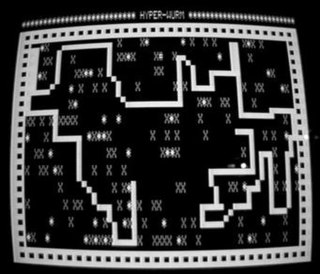
Snake is a sub-genre of action video games where the player maneuvers the end of a growing line, often themed as a snake. The player must keep the snake from colliding with both other obstacles and itself, which gets harder as the snake lengthens. It originated in the 1976 two-player arcade video game Blockade from Gremlin Industries where the goal is to survive longer than the other player. The concept evolved into a single-player variant where a snake gets longer with each piece of food eaten—often apples or eggs. The simplicity and low technical requirements of snake games have resulted in hundreds of versions—some of which have the word snake or worm in the title—for many platforms.
A ringtone is the sound made by a telephone to indicate an incoming telephone call. Originally referring to the sound of electromechanical striking of bells or gongs, the term refers to any sound by any device alerting of an incoming call.
The Nokia 3310 is a discontinued GSM mobile phone announced on 1 September 2000, and released in the fourth quarter of the year, replacing the popular Nokia 3210. It sold very well, being one of the most successful phones, with 126 million units sold worldwide, and being one of Nokia's most iconic devices. The phone is still widely acclaimed and has gained a cult status due to its reputation for durability.

The Nokia 6600 is a mobile phone introduced on 16 June 2003 by Nokia, costing approximately €600 when released in October 2003. It was Nokia's high-end model of the 6xxx Classic Business Series. At the time of release, it was the most advanced product ever launched by Nokia, and it runs on Symbian OS 7.0s. It also featured a VGA camera, a music player and video player, Bluetooth and extended storage by memory card, being the second non-Communicator to do so.
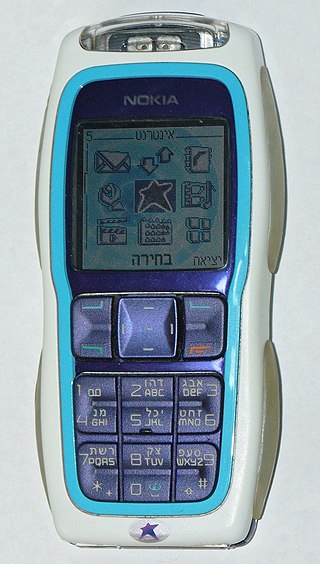
The Nokia 3220 is a GSM, Series 40 mobile phone from Nokia. The Nokia 3220 was introduced on 31 May 2004 as a "fun" device with LED lights and Xpress-on covers. It was the first entry-level phone that offered full access to the Internet, with an XHTML browser and POP3/IMAP email client. The tri-band camera phone uses GPRS and EDGE for its internet connections.

Nokia 6650 is a mobile phone developed by Nokia. It was the company's first 3G phone, first leaked in June 2002 and eventually unveiled on 26 September 2002. It was also the first device supporting the 3G W-CDMA 2100 MHz band.

The Nokia N95 is a mobile phone produced by Nokia as part of their Nseries line of portable devices. Announced in September 2006, it was released to the market in March 2007. The N95 ran S60 3rd Edition, on Symbian OS v9.2. It has a two-way sliding mechanism, which can be used to access either media playback buttons or a numeric keypad. It was first released in silver and later on in black, with limited edition quantities in gold and purple. The launch price of the N95 was around €550.

The Nokia 6310i is a mobile phone from Nokia first introduced at the CeBIT fair in March 2002 with sales starting later that year and discontinued in late 2005, it was Nokia's first tri-band phone offering. Primarily marketed as a business phone, it was for some years the dominant GSM device in the corporate world. The device was most commonly offered in Two-tone Silver/Grey or Two-tone Gold/Black trim; the third option, a Copper coloured variant, was much rarer.

Some mobile phones support use of two SIM cards, described as dual SIM operation. When a second SIM card is installed, the phone may allow users to switch between two separate mobile network services manually, have hardware support for keeping both connections in a "standby" state for automatic switching, or have two transceivers to maintain both network connections at once.

The Nokia N900 is a smartphone made by Nokia. It supersedes the Nokia N810. Its default operating system, Maemo 5, is a Linux-based OS originally developed for the Nokia 770 Internet Tablet. It is the first Nokia device based upon the Texas Instruments OMAP3 microprocessor with the ARM Cortex-A8 core. Unlike the three Nokia Internet tablets preceding it, the Nokia N900 is the first Maemo device to include phone functionality.

The Nokia 6210 is a mobile phone made by Nokia. It was introduced at the CeBIT fair in Hanover in February 2000, succeeding the Nokia 6110. In addition to calling and SMS messaging, it has many other features, including an alarm clock, HSCSD modem, WAP web client, three games, calculator, to-do list application, calendar, infrared connectivity, voice recorder, and stopwatch. The plastic detail below the keypad, which Nokia called the Personal Badge, is removable; for a time, Nokia sent free promotional replacements, screen-printed with text of the customer's choosing.
Nokia's strategic nomenclature can be traced back in 2005 when the Nseries line was launched, offering devices with flagship specifications and premium hardware at various price points. These devices were considered the "bread and butter" of the company and were often positioned to showcase their latest technologies. Thanks to the newfound consumer and enterprise interest in smartphones at the time, the company introduced four additional collections to diversify their product portfolio and meet demands in most market segments. These new phone series were named Eseries, targeting small business and enterprise customers; Xseries, providing consumer-grade multimedia-focused devices; Cseries, which Nokia used to target both the low-end and mid-range market segments; and Tseries, for devices exclusive to the Chinese market.
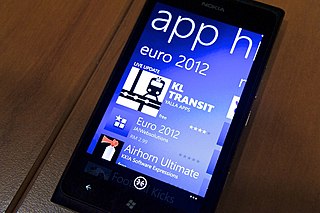
The Nokia Lumia 900 is a Windows Phone-powered smartphone, first unveiled on January 9, 2012, by Nokia at Consumer Electronics Show 2012, where it won the Best Smartphone award in January 2012. The phone has 4G LTE support and was released in April 2012. The Lumia 900 was the flagship smartphone of the Lumia range until the release of its successor, the Lumia 920.

Microsoft Lumia is a discontinued line of mobile devices that was originally designed and marketed by Nokia and later by Microsoft Mobile. Introduced in November 2011, the line was the result of a long-term partnership between Nokia and Microsoft—as such, Lumia smartphones run on Microsoft software, the Windows Phone operating system; and later the newer Windows 10 Mobile. The Lumia name is derived from the partitive plural form of the Finnish word lumi, meaning "snow".
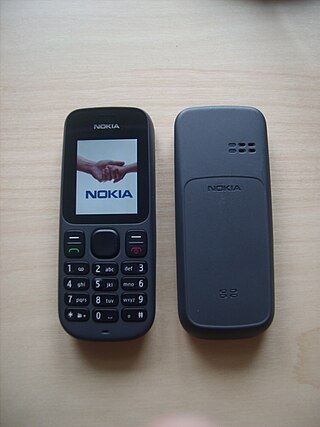
The Nokia 100 was a basic 2G feature phone released by Nokia on 25 August 2011. The mobile phone was aimed at emerging markets and budget-conscious consumers, and could be bought carrier-unlocked for a relatively low price.

The Nokia Lumia 1520 was a flagship Windows Phone phablet smartphone designed and produced by Finnish telecommunications manufacturer Nokia in partnership with American software manufacturer Microsoft. The device was first announced at the Nokia World event on 22 October 2013 in Abu Dhabi, alongside its mid-range phablet stablemate the Nokia Lumia 1320 and Nokia's 10.1 inch Windows RT tablet the Nokia Lumia 2520. Until its discontinuation in the United States on 7 April 2015 the phone served as the flagship device for Nokia's Lumia Series and Microsoft's mobile effort. On 6 October 2015 Microsoft officially announced its flagship phablet successor, the Microsoft Lumia 950 XL, with availability sometime in November 2015.

Android One is a family of third-party Android smartphones promoted by Google. In comparison to many third-party Android devices, which ship with a manufacturer's customized user interface and bundled apps, these devices run near-stock versions of Android with limited modifications, and a focus on Google services. Devices that run Android One receive OS updates for at least two years after their release, and security patches for at least three years.
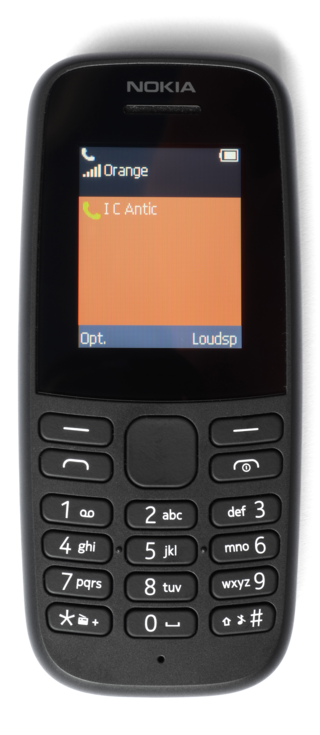
Series 30+ is a software platform and application user interface used for Nokia-branded mobile devices. The platform was introduced by Nokia in September 2013, first appearing on the Nokia 108, and has been the main Nokia feature phone operating system after the end of the Series 30 and Series 40 platforms in 2014. Despite the similar name and user interface, S30+ is technically completely different and unrelated to S30.
Human Mobile Devices (HMD), also branded as Nokia Mobile and formally as HMD Global, is a Finnish mobile phone manufacturer. The company is made up of the mobile phone business that the Nokia Corporation sold to Microsoft in 2014, then bought back in 2016. HMD began marketing Nokia-branded smartphones and feature phones on 1 December 2016. The company has exclusive rights to the Nokia brand for mobile phones through a licensing agreement. The HMD brand was initially only used for corporate purposes and does not appear in advertising, whereas the name "Nokia Mobile" is used on social media. In January 2024, HMD rebranded to Human Mobile Devices, and will use their own branding on future devices alongside that of Nokia.















